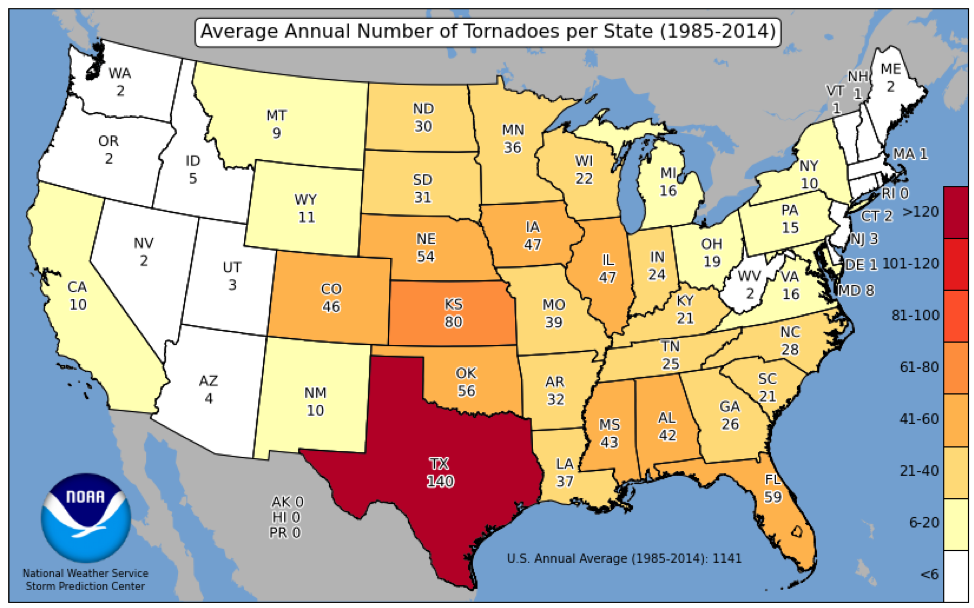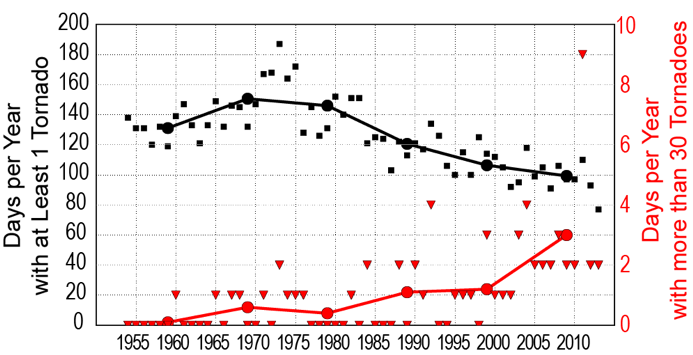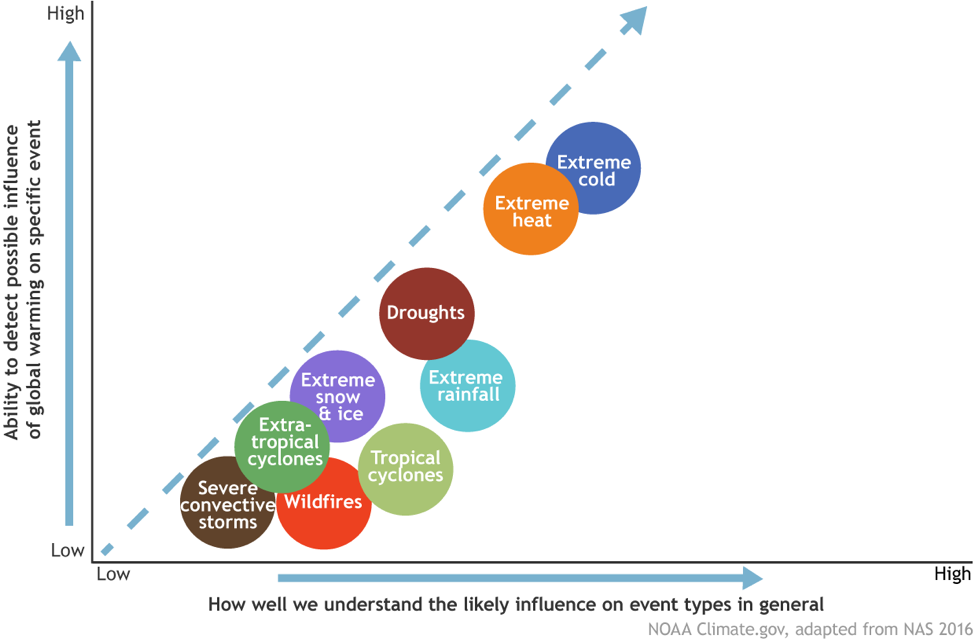The growing intensity and frequency of severe weather events like extreme rainfall, extreme heat, and drought can be directly attributed to climate change, but the link between tornadoes and climate change is currently not fully understood. Challenges remain that prevent clearer attribution, including: limited data collection methods, high year-to-year variability, and difficulty modeling key physical elements that help tornadoes form as well as directly modeling tornadoes due to their small size.
Tornado records date back only to the 1950s in the United States, and vary significantly from year to year, making it difficult to identify long-term trends. The assessment of tornado wind speeds from associated damage may also have been less consistent before the 2007 implementation of the Enhanced Fujita (EF) Scale for tornado damage intensity. In addition, measuring the presence of tornadoes relies on eyewitness accounts and aftermath damage assessments rather than quantitative data. As the population in many areas affected by tornadoes has grown, we have seen an increase in eyewitness reports and property in harm’s way, leading to a larger number of recorded tornadoes, especially weaker ones. Additionally, improved radar technology helps us identify severe storms that may produce tornadoes that may not have been detected decades ago.
Despite these challenges, studies have found a few trends in the United States by using portions of the record that are more reliable, like data for very strong tornadoes. Although the number of days with tornadoes has fallen, other trends are increasing, including outbreaks with 30 or more tornados in one day, the density of tornado clusters (i.e., tornadoes are closer geographically), and the strength of tornadoes. The distribution of tornadoes has also shifted eastward. These trends have not been directly linked to climate change.
An added difficulty in determining future tornado frequency and intensity caused by changes in the climate is that tornadoes are too geographically small to be well simulated by climate models. However, models can simulate some of the conditions that contribute to forming severe thunderstorms that often spawn tornadoes. Researchers are working to better understand how the building blocks for tornadoes—atmospheric instability and wind shear—respond to global warming. It is likely that a warmer, more humid world allows for more frequent instability, while it is also possible that a warmer world decreases wind shear. Multiple studies find that the conditions that produce the most severe thunderstorms from which tornadoes may form are more likely as the world warms. Climate change may also cause a shift in the seasonality of severe thunderstorms and the regions that are most likely to be hit.
As scientists improve their physical understanding of the processes that cause tornadoes, and as climate models are run at higher spatial resolutions, our understanding of the climate change influence on tornadoes will improve. Likewise, as the observational record increases over time, trends will likely become more obvious.



